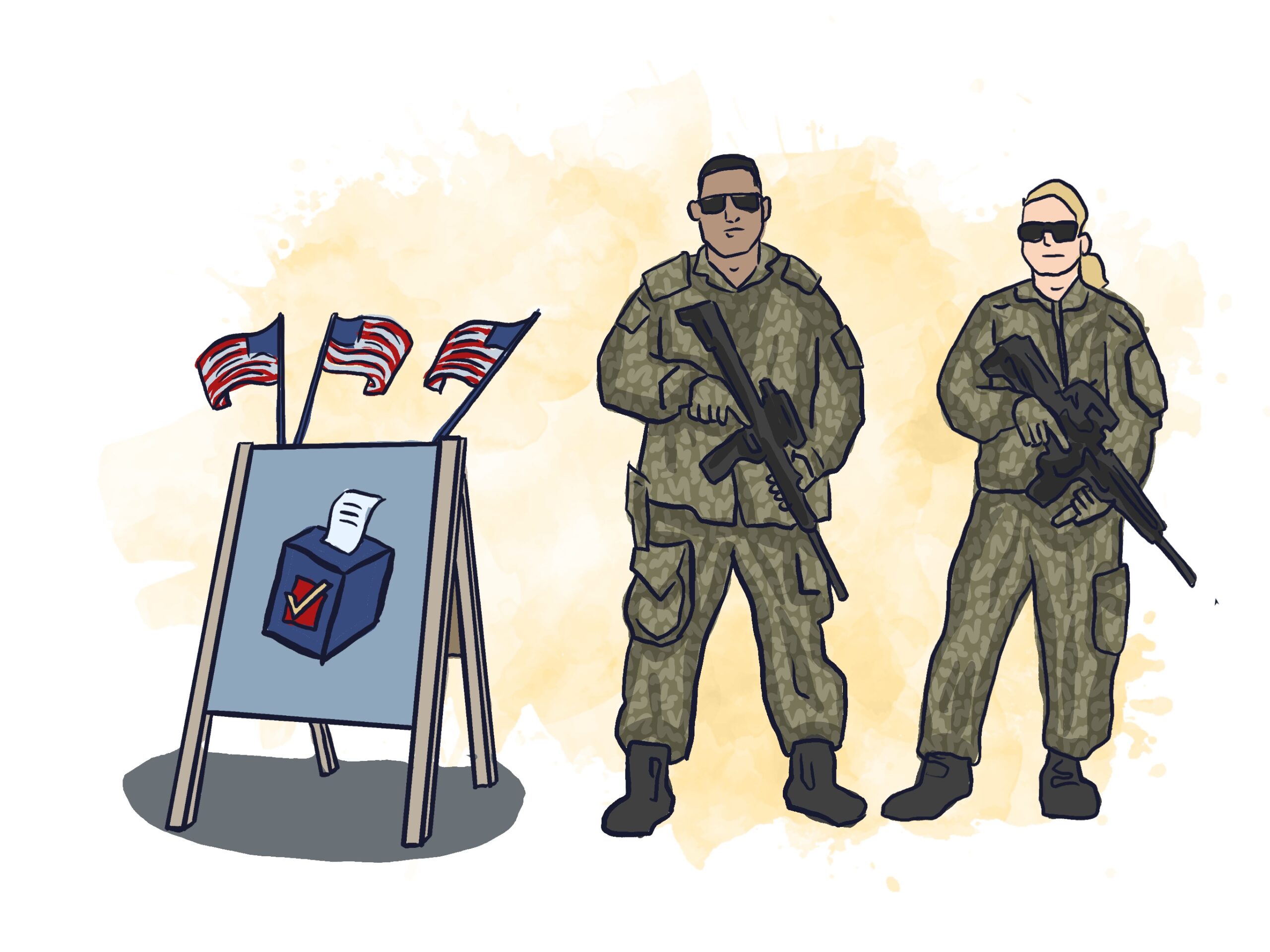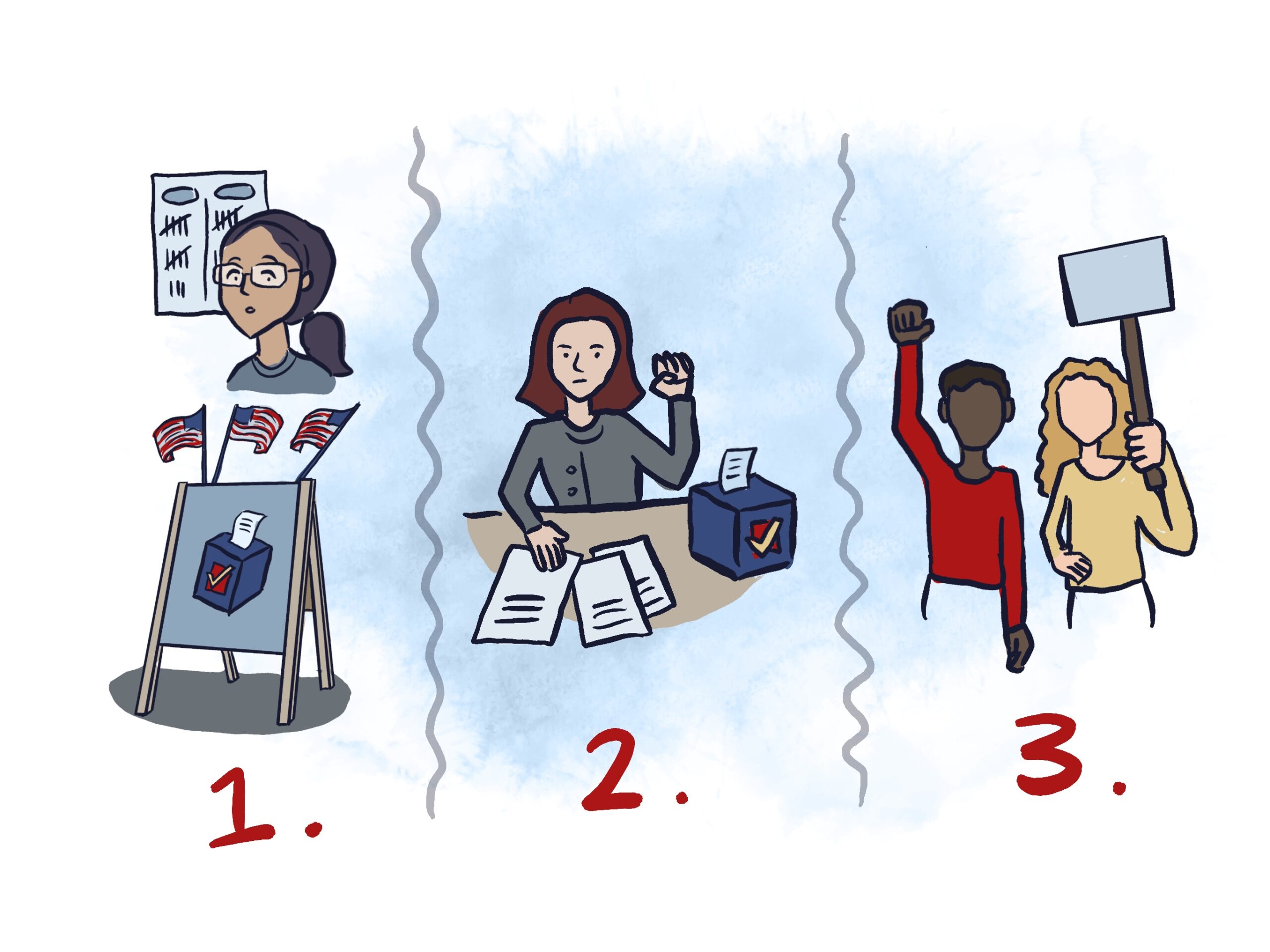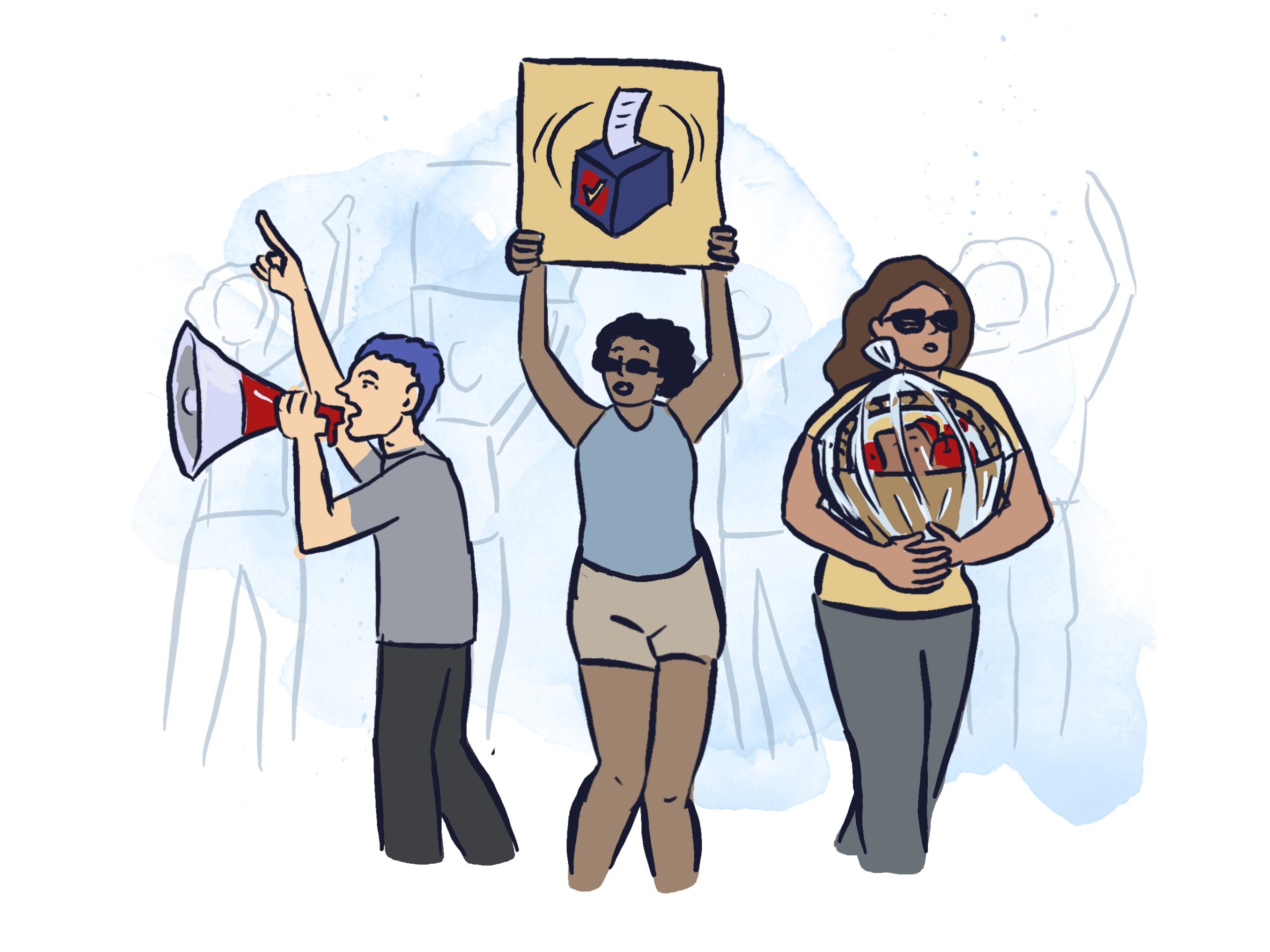You hear very little about how D.C. insiders from the Paperclip Movement are slowing down Trump. The few that are left move very quietly. But you feel like you see them in action when Trump tries to move a raft of voter restriction bills. He proposes requiring national voter IDs, restricting voting rights for people with criminal convictions, and removing legal protection of voting rights. With the typical chaos of his administration, many of the measures are hastily written and poorly rolled out — congressional and implementation roadblocks seem to appear at every step.


When your phone alerts you that Trump has ordered the National Guard to stand outside of polling places — a clear intimidation tactic — your heart takes a leap. You know what will happen: The court challenges against this will eventually fail. Public sentiment won’t like it, but Trump is way past caring about majority public sentiment.
As planned, the resistance movement picks three simultaneous tactics. Some use existing institutions to fight, bringing in international election observers to oversee results and do their own tallies. Others begin organizing election workers to resist restrictions — walking the edge of legality by slow-walking the new measures. And you find yourself in the third wing: public protest.


You attend rambunctious public rallies regularly, encouraging people to “count every vote.” The actions look friendly, but the movement is preparing other tactics.
